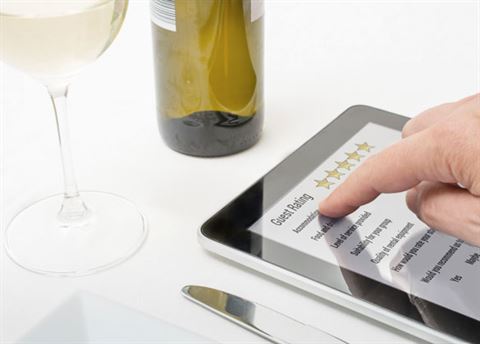We think • December 2014
There’s an art to deciphering restaurant reviews
Whether it’s a critique in your local magazine or a comment you’ve read on Twitter, decoding a food review can be as challenging as dealing with the indigestion you might get from ignoring a bad one. Food writer and restaurant critic for The Guardian, Emma Sturgess, shares her tips on how to identify the ones worth reading
Can you trust restaurant reviews? Well, one man’s meat is another man’s poison. And one restaurant critic’s creative, boundary-pushing 16-course tasting menu is another critic’s colossal waste of time. Yes, in common with customers the world over, different food columnists enjoy different things. And in order to gain something more than five minutes of diversion – something, perhaps, like a good restaurant recommendation – from their excellent work, you can’t rely on just anyone. You need a reviewer who likes what you like.
Of course, tuning into a critic (a traditional, experienced one, with an expense account, a weekly feature and a selection of aliases for table-booking purposes) is easier on home turf. If you dabble even lightly in restaurant spoddery, have a well-developed Google finger or a relationship (business only) with the newsagent, you’ll be familiar with your local writers and their peccadilloes.
In the UK, there are critics whose favourite restaurants will almost certainly be yours if you a) really, really like pork; b) prefer scoping out your fellow diners to actually eating; c) dislike bloated, egomaniacal multi-course menus or d) secretly worry that no one likes you. The more you read them, trying out their choices where you can, the easier it’ll be to know whether that hidden ramen joint, old-school French brasserie or sexy hotel dining room is for you. And that, just like a pile of ribs smoked low and slow or a fully laden cheese chariot, is known as a result.
When you’re away from home, things get trickier. You can’t find a good dinner abroad by lazily flicking through your usual papers. Apart from anything else, some travel writers, bless them, will eat anything. You have to put your back into it.

Decode the good from the bad by looking out for Twitter feedback and blogs – unless they use the word ‘nom’
Restaurant guide books are one way, though be aware that they have favourites, too. Michelin’s international reach is great, but it has a reputation for falling much too easily for second restaurants from chefs who already hold stars, not demoting declining restaurants quickly enough and failing to recognise the potential in new businesses. For faster-moving feedback, you’ll be needing the internet. And time to read most of it.
My favourite way of finding a good restaurant in unfamiliar territory is to research like mad, collating opinions until I decide they can’t all be wrong about, say, Hot Doug’s encased meat emporium in Chicago (now, sadly, closed).
Check local media for favourites and recent reviews. Search Twitter for feedback on them, especially from someone you respect; travelling cookbook writers make useful recommendations because they are always looking for good ideas. Blogs can be brilliant, though avoid anyone who uses the term ‘nom’ or doesn’t declare freebies. If you don’t read the language, look for expat bloggers: in Rome, Katie Parla is the definitive passionate guide. And if you really don’t have time to invest in snaring a reliably good dinner, you could always walk down the street, have a look at a few menus and take your chances. Just don’t blame me if you get indigestion.
This article has been tagged Food + Drink, Opinion
